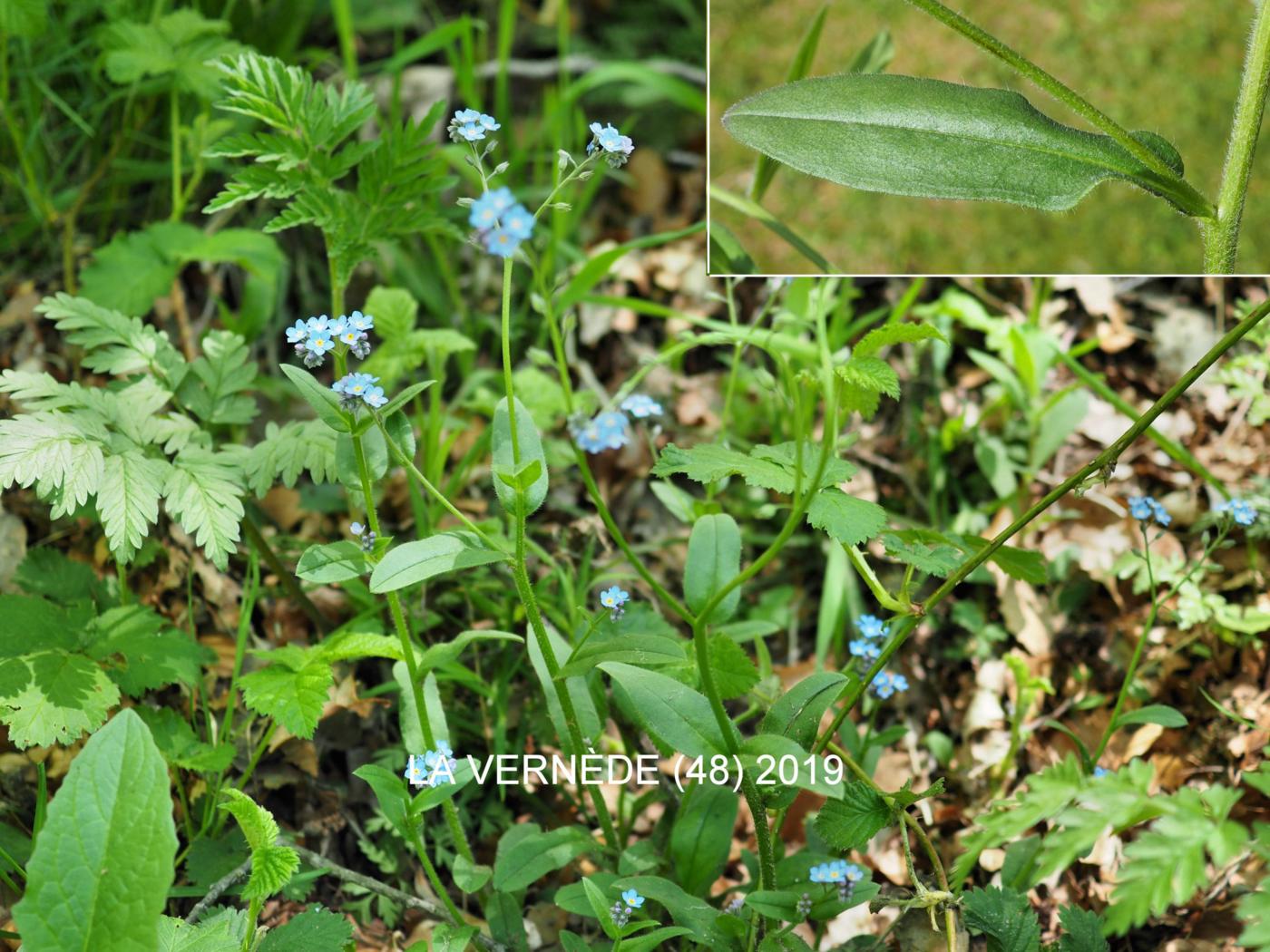 (modifié de Coste, Flore de la France 1937) :
(modifié de Coste, Flore de la France 1937) :
[Différences de M. sylvatica, ce qui n'existe pas dans notre région, en parentheses] Plante bisannuelle ou pérennante de 10-50 cm, velue-hérissée, à souche oblique, courte ; tiges raides, élancées, un peu épaisses, rameuses
Écologie : (répartition d'après la flore) Bois et prés humides montagneux, dans une grande partie de la France; nul dans le Nord-Ouest et la région méditerranéenne.
Répartition hors de France : Europe; Asie boréale et occidentale; Abyssinie, Maroc, Canaries.
 (modified from translated Coste):
(modified from translated Coste):
NOTE: the French text is more complete and up-to-date
[Differences from M. sylvatica, which doesn't exist in our region, in brackets]Biennial or perennial plant of 10-50 cm, hairy-bristly, short oblique rootstock; shoots stiff, straight, slender, slightly thick, branched
Ecology UK: Not native to the UK - France: Woodland and wet mountain meadows, in a large part of France; absent in the Northwest, and the Mediterranean region.
Distribution outside France: Europe; Asia boreal and Western; Abyssinia, Morocco, Canary Islands.
Fleurs : d'un beau bleu, rarement roses ou blanches, assez grandes, En grappes raides, nues, à la fin longues et lâches; calice petit, à tube hérissé de poils la plupart crochus, à lobes fructifères dressés, non connivents; corolle de 4-8 mm, à limbe plan plus long que son tube qui égale le calice
Floraison France : Mai-juillet.
Flowers: a beautiful blue, rarely pink or white, quite large, borne on stiff, bare clusters, becoming long and loose; fruiting pedicels slender, outspreading, out-spreading, the lower 1 - 2 times longer than the calyx; small calyx tube bristly with hairs mainly crooked, fruiting lobes erect, non connivent; corolla 4-8 mm, with a flat body longer than its tube which equals the calyx
Flowering UK: (none) - France: May-July.

 Forget-me-not, Wood
Forget-me-not, Wood
 Myosotis des bois
Myosotis des bois









 Please
consider
Please
consider 











